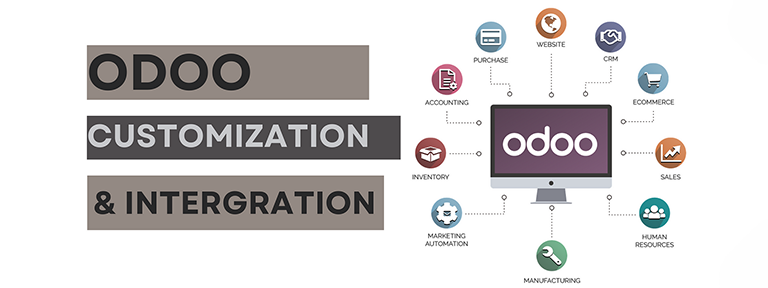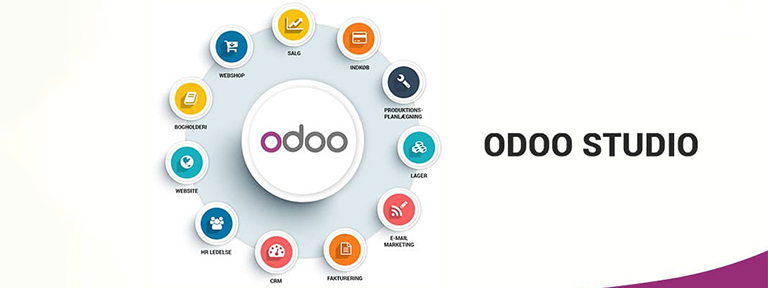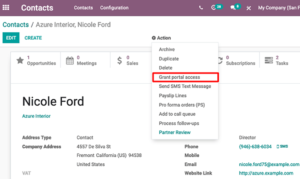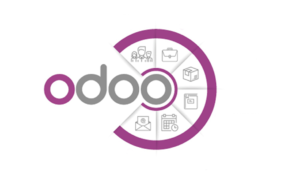Odoo Customization refers to customizing the business and tailoring its needs. The appearance of the Odoo ERP software matches your specific business requirements. With the customization process, you can modify all the existing modules that fulfills all your business requirements. When it comes to customizing, Odoo has a number of benefits that enable it to enhance your business operations. They have various benefits, including enhanced efficiency, improved user experience, scalability, and flexibility in workflow. Here are some tips and tricks for customizing Odoo and personalising your Odoo instance.
- Use the Studio App for Customizations: Odoo ERP is a powerful tool that enables you to customize your Odoo applications without any coding process. By using these tips, you can create new fields, automate workflows, and design new applications. Automate the business process and use a drag-and-drop interface.
- Custom Modules: Set up a module structure including various modules and a Odoo development environment using Odoo.sh or a local setup with tools like Docker.
- Custom Views: In this module, XML Views play an important role that enables you to change the layout, add new fields, or modify existing ones.
- Automated Actions and Server Actions: Set up automated actions to perform specific tasks, like sending an email when a sale order is confirmed. Another one is server actions that execute the custom server-side logic, such as updating records.
- Advanced Security and Access Control: With this customization process, you can read, write, create, or delete records in different models and set up groups and records based on the conditions.
- Custom Fields and Models: Add custom fields to capture the additional data and use model inheritance without any core code that must be specific to your business needs.
- Integrations: Integrate the Odoo Module through the API interface and third-party applications to add new functionality.
- Multi-Company Setup: Odoo supports multi-company setups that manage multiple companies and automate transactions for sales and purchases of services or products.
- Localization: Configure the taxes, accounting, and other financial terms. Add multiple languages and translate fields, reports, and templates.
- Performance Optimization: Odoo ERP optimize performance by adding indexes to query fields. Improve the performance by using caching mechanisms.
- Testing and Debugging: Testing all the custom modules to ensure they are correct or not. Use debugging tools to resolve the troubleshooting problems.
- Training and Documentation: Conduct the training sessions to be aware of the customized features. Maintain the documentation for the customization process so new users can easily understand it.
Guide to customizing Odoo to fit specific business needs.

Odoo customizes the business, tailoring it to fulfill all the business requirements. Here are the following steps that will help you learn how to customize Odoo for your business.
- Understand Your Business Requirements: These steps understand the business requirements and fulfills all the needs that users want to run their business. Before moving into customization, you clearly understand the business process and want to know how CRM supports it. There are various aspects of the business, like sales, CRM, customer support, marketing campaigns, inventory, accounting, HR, project management, etc.
- Set Up the Basic Configuration: Download and install Odoo from the official website, follow the initial setup, and configure all the information.
- Customize Modules: Install the modules that align the business process and customize each module by enabling their features.
- Customize Fields and Views: Modify the layout and add the custom field to capture the specific data as per the requirement.
- Automate Workflows: Set up automated tasks like sending emails, updating records, or creating tasks, and use the server actions.
- Integrate Third-Party Applications: Use API software to integrate other software applications and install third-party applications.
- Customize User Experience: Create roles, dashboard, and access the rights for the different user roles.
- Enhance Customer Interaction: Customize the email templates and set up the customer portal that enables clients to access their information.
- Reporting and Analytics: Customize the report and export the data in the csv or external format.
- Data Management: Implement validation rules to maintain the integrity of the data. Utilize all the import and export tools to manage bulk data efficiently. Remove the duplication in the data.
- Training and Support: Provide comprehensive training to the user and train them about how to customize the Odoo ERP. Maintain documentation of all consumptions for future reference. Set up the support system to resolve customer queries.
- Continuous Improvement: Feedback is an important tool to improve performance. We need customer feedback so we can improve the customized services.
Tips on using Odoo Studio and Custom development.

Odoo Studio and Custom development enables you to tailor your business needs or requirements. In Odoo Studio, the companies manage the multiple numbers of companies on the single platform but on Odoo Studio, customization is done through the API or developments. Odoo studio is used for customizing your applications and odoo studio, there is no coding needed. There are various tips used in the Odoo Studio and custom development.
1. Tips on using Odoo Studio
- Activate Odoo Studio: Click the Studio icon and drag and drop to select the option. After following the steps, the Odoo Studio is activated.
- Customize Fields and Views: Add and modify the new fields into the form and then rearrange it to optimize it for your business processes.
- Create Custom Applications: Create new databases and applications to store data specific to your business.
- Automate Workflows: Automated the emails and set up the records of the user groups.
- Reports and Dashboards: Design the dashboard and custom reports by adding the KPI option that is suitable for your business.
- Testing and Publishing: Preview your work before publishing and change if there is any error.
2.Tips for Custom Development
- Set Up a Development Environment: Setup the Integrated Development Environment by using the virtual machine.
- Understand the Odoo Framework: Learn the module structure of Odoo and train yourself with all the modules and features of the Odoo Modules.
- Develop Custom Modules: Develop the new and existing Odoo modules to extend Odoo’s functionality.
- Customize Views with XML: Add a button to arrange fields and elements in XML Views.
- Security and Access Control: Implement records and define ACL to manage all the records.
- Testing and Debugging: Preview your work before publishing and correct it if there is any error.
- Deployment and Maintenance: Regularly update your custom modules and use GIT version control to manage your custom modules.
Conclusion
Odoo ERP gives you the best advantages for your business in terms of scalability, integrity, and cost-effectiveness. Odoo is a powerful tool that helps to improve your business efficiency, reduce costs, and maintain customer satisfaction. With the correct strategy and plans, businesses can grow in the competitive market and earn the highest rank. They integrate the various business processes into a single platform, which helps you improve workflow efficiency and decision-making, streamline operations, and increase your business productivity.
Read More : Top 10 Odoo Modules for Small Businesses









